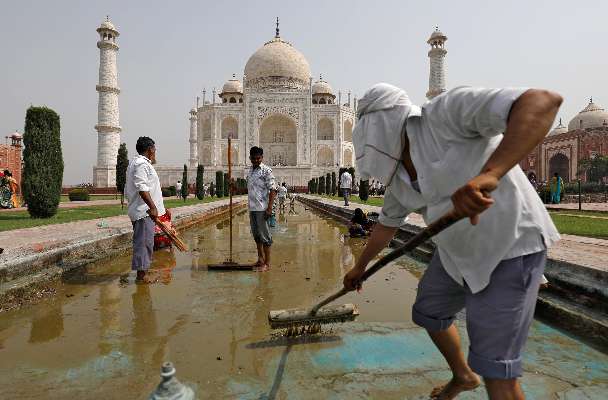Agra: The white-marble Taj Mahal is turning yellow and green as the 17th century mausoleum weathers filthy air in the world’s eighth-most polluted city.
One of the Seven Wonders of the World, the Taj Mahal flanks a garbage-strewn river and is often enveloped by dust and smog from belching smokestacks and vehicles in the northern city of Agra.
Tiny insects from the drying Yamuna River into which the city pours its sewage crawl into the Taj Mahal, their excrement further staining the marble, an environmental lawyer told the Supreme Court.
The court slammed the government for not doing enough to preserve the monument, which was built by Mughal emperor Shah Jahan as a mausoleum for his wife Mumtaz Mahal.
“If the Indian scientists and the (conservationists) can’t do the things, they should be able to contact foreign experts or conservationists, those who can come and they will be readily happy to help,” said lawyer MC Mehta, who has been fighting to save the Taj Mahal from pollution for three decades.
Restorers have been using a paste of a clay mineral to clean the marble. It pulls away impurities from the surface and can then be washed off with water.
Activists are also concerned that the falling water table in Agra may be weakening the wooden foundations. Other worries include roads clogged with polluting vehicles and rampant construction around the mausoleum.
Behind Taj’s back, plastic bags and garbage pile up by the river as smoke billows from a chimney in the distance. Outside the Taj complex, a group of people gathered near a funeral pyre.
The change in colour has not come out of the blue. Environmentalists and historians have long warned about the risk of soot and fumes from factories and tanneries dulling the ivory monument.
Tourists visiting the monument said they hoped steps will be taken to preserve it.
Pollution turns white marble Taj Mahal green






